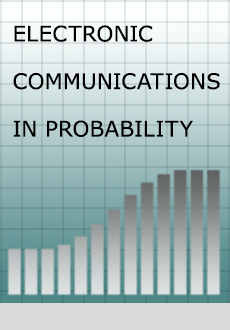Abstract
We study a regularization by noise phenomenon for the continuous parabolic Anderson model with a potential shifted along paths of fractional Brownian motion. We demonstrate that provided the Hurst parameter is chosen sufficiently small, this shift allows to establish well-posedness and stability to the corresponding problem – without the need of renormalization – in any dimension. We moreover provide a robustified Feynman-Kac type formula for the unique solution to the regularized problem building upon regularity estimates for the local time of fractional Brownian motion as well as non-linear Young integration.
Funding Statement
This project has received funding from the European Research Council under the European Union’s Horizon 2020 research and innovation programme (grant agreement No. 754362 and No. 949981)
Acknowledgments
The author wishes to thank Cyril Labbé for early discussions, Martina Hofmanová, Jörn Wichmann and Emanuela Gussetti for comments and suggestions on a preliminary version of this work as well as the anonymous referees for their suggestions that helped to improve the manuscript.
Citation
Florian Bechtold. "Regularization by random translation of potentials for the continuous PAM and related models in arbitrary dimension." Electron. Commun. Probab. 27 1 - 13, 2022. https://doi.org/10.1214/22-ECP490
Information





